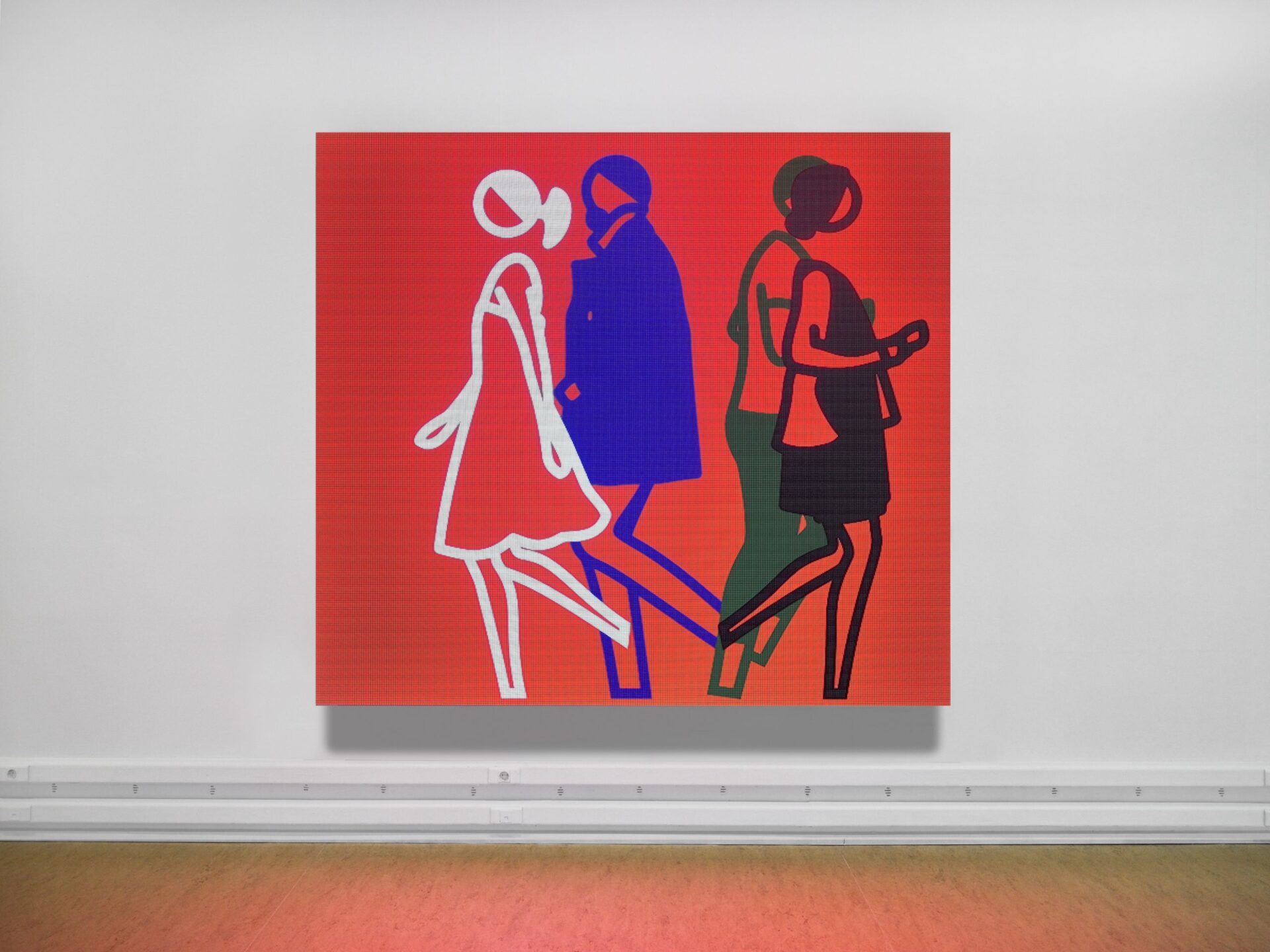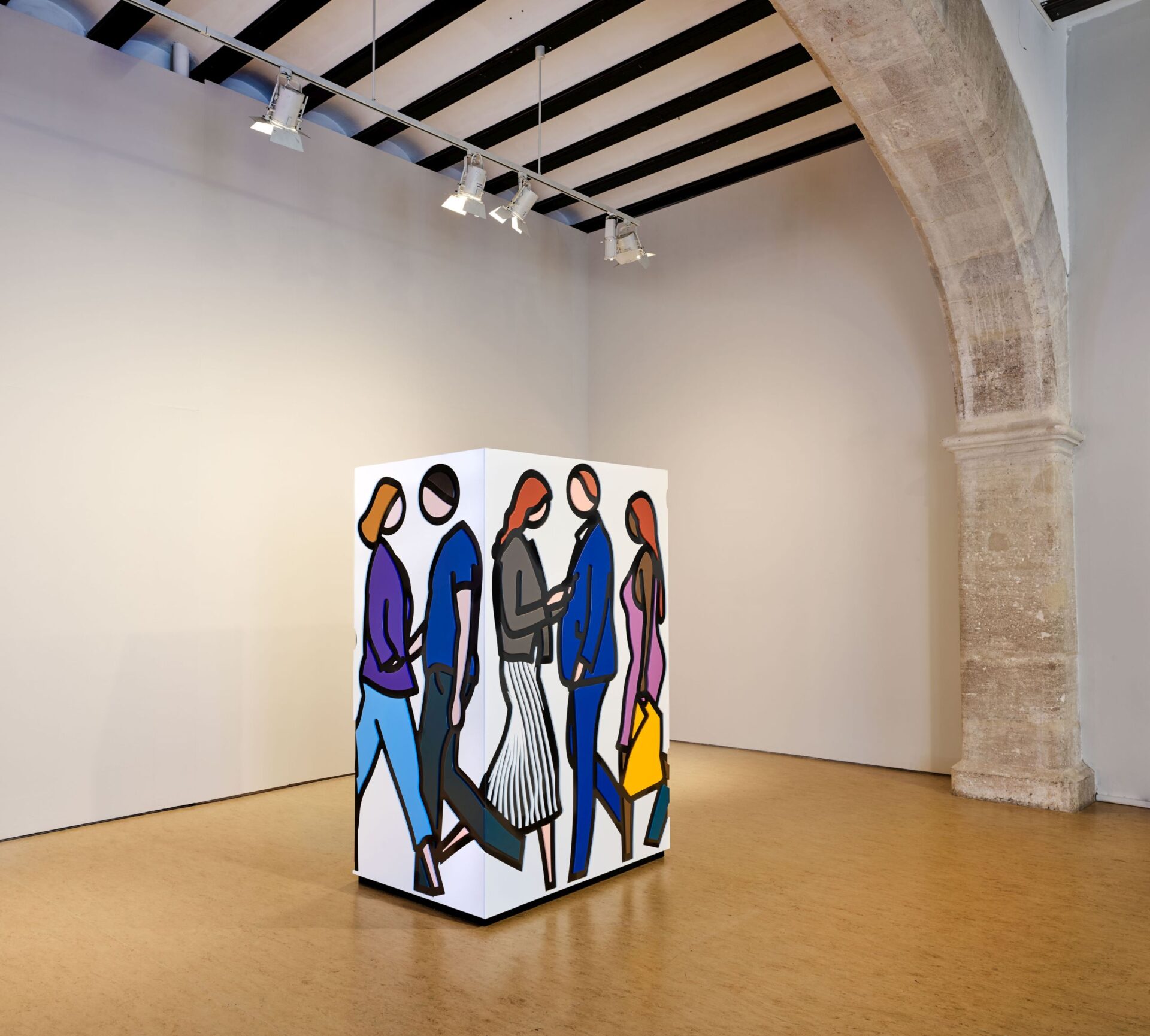Julian Opie was born in London, but grew up in Oxford, where he was nurtured by the Ashmolean Museum collections that would later influence his work. He returned to London to attend Goldmiths College, an institution that was in the midst of a profound transformation that led to the abolition of siloed departments such as Painting, Sculpture, Printmaking, Photography, Film and Video to become a single department called Fine Art. As a result, students were able to work in any of these media. Opie benefited from this and worked with media such as video, drawing, painting and sculpture.
The great masters of painting were the subjects of “A Pile of Old Masters”(1983), one of the works for which Opie became known on the London art scene. This work consisted of a series of copies of works by classical artists such as Manet, Picasso, van Gogh and Mondrian scattered across the gallery floor and stacked on top of each other. This kind of installation not only drew on the great names of Art History, but was also influenced by comic strips, another of Opie’s sources of inspiration and one of the characteristics of his work, as the artist is as capable of being inspired by a relief from Ancient Egypt as by a Tintin comic strip.
Opie’s works soon attracted the attention of art critics and museums and, in 1993, the Hayward Gallery devoted a complete exhibition to him in which the director of exhibitions, Henry Meyric Hughes, placed Opie among the ranks of other British sculptors who had shown their works in this gallery, such as Tony Cragg and Richard Long. This exhibition was a good example of the work Opie was doing at the time, consisting mainly of sculptures and paintings that tended towards three-dimensionality, but always with drawing as a starting point. As he explains, “ever since I started exhibiting art in the early 1980s, I have played with the relationship between the drawn and the sculpted. I often draw on sculptures, or rather I turn the material I am drawing on (the blank sheet of paper) into a sculpture of the very thing I am drawing “1.
The advent of the computer undoubtedly affected the relationship between drawing and sculpture. The computer taught Opie another way of working: “The computer plays a role that did not exist before, something in between the final work and the idea. Before, I used to think, draw and then create something. But now I can think and draw on the computer, develop it further, and then leave it there; it’s not like a thought that fades away, it can just stay on the computer and be downloaded when I’ve decided what to do with it. A drawing is inflexible by comparison; you can’t change its scale or its colour without destroying what you have already done “2.
This new way of working affected all the media on which Opie worked and although the background remained the same, the form changed and the figures became more simplified. Simple lines gave shape to a human figure accompanied by flat colours. Everything was further simplified and stripped of all accessories, even a full-length portrait could be represented without a neck. This is how Opie has achieved his clearly recognisable style, which can be seen in the works belonging to the Hortensia Herrero collection, such as Doctor and Taxi Driver, Old Street May 1, Sam Amelia Jeremy Teresa 2 and Street 3.
Most of these works were acquired from the Julian Opie exhibition that the Hortensia Herrero Foundation organised in 2021 in the Plaza del Patriarca and at the University of Valencia’s La Nau exhibition centre.

